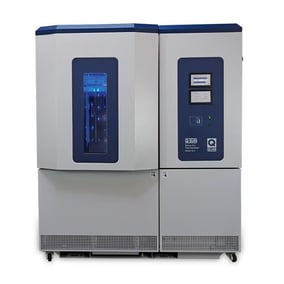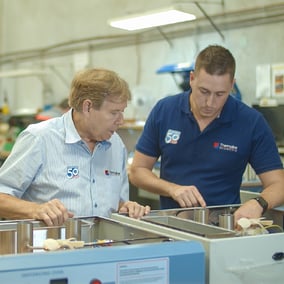A premium outdoor furniture manufacturer faced unexpected product failures despite passing accelerated tests. Collaborating with Q-Lab, they identified that traditional testing methods were missing key real-world conditions. By using both Q-SUN and QUV tests, they were able to better simulate outdoor exposure and refine their products for improved durability.
Overview and Problem Statement
Q-Lab collaborated with a high-end American manufacturer of outdoor furniture to establish a robust correlative accelerated and outdoor testing programme. The company’s products are frequently installed in public spaces such as office courtyards, urban parks, and outdoor shopping malls. Renowned for both performance and aesthetics, the company has built a strong reputation and takes pride in delivering premium products that are positioned as market leaders in terms of quality and appearance.
Problem Statement
Despite consistently passing accelerated laboratory tests, the manufacturer began to experience significant product failures when their furniture was exposed to outdoor environments. These failures occurred despite the fact that their products had passed the typical accelerated testing protocols, resulting in what is commonly referred to as "false positives." Fortunately, the issue was uncovered through the manufacturer’s own outdoor exposure testing, carried out at their manufacturing facility. This kind of proactive outdoor testing, although often overlooked, proved to be invaluable for identifying real-world performance issues before they could affect the brand's reputation. It is a practice that Q-Lab strongly advocates as part of any comprehensive weathering test programme.
The manufacturer’s outdoor exposure test revealed a significant issue with the clear coat on a plastic component, which started to turn white after just one year of exposure to outdoor conditions. This degradation was not detected in any of the accelerated testing conducted on the Q-SUN XE-3 Xenon Arc Tester using ASTM G155 Cycle 1. Even when the customer modified the irradiance setpoint to 0.68 W/m² @ 340nm (to more accurately simulate "noon summer sunlight"), rather than the standard 0.35 W/m² @ 340nm, the Q-SUN test still failed to replicate the problem. Despite extensive and modified testing, the accelerated conditions were not capable of simulating the outdoor failure that occurred.
Study
To better understand why the accelerated testing was not accurately replicating the outdoor exposure, Q-Lab conducted a comparative exposure test using both the Q-SUN and QUV testers. Small plastic plaques made from the manufacturer’s failing formula were exposed to both tests. The Q-SUN exposure was carried out in order to validate the customer’s findings, while the QUV exposure was implemented to determine if it offered a better correlation with the outdoor exposure results.
The results from the Q-SUN exposure confirmed the manufacturer’s observations. When the plaques were exposed to a modified version of ASTM G155 Cycle 1, the clear coat did not exhibit the white fading seen in the outdoor exposure test. In contrast, the QUV tester running ASTM G154 Cycle 1—which alternates between UV exposure and condensation cycles from 8:00 to 4:00—showed an almost identical match to the degradation pattern observed outdoors. The QUV test produced results that were far more consistent with the outdoor performance, confirming the discrepancy between the two accelerated testing methods.
Upon further investigation, it became apparent that the G155 test did not replicate the outdoor failure because it lacked sufficient water exposure. The xenon-based standard, which uses short spray cycles every two hours, fails to replicate the moisture conditions that are present in the outdoor environment. The QUV G154 test, by contrast, includes consistent condensation steps, providing a much closer simulation of the actual weathering conditions the product would face outdoors.
Conclusion
After reviewing the comparative results and identifying the limitations of the Q-SUN testing, the manufacturer decided to purchase a QUV tester for future product development and quality control. By running their formulas on the QUV, using ASTM G154, they were able to replicate the clear coat whitening in a much shorter timeframe than the previous Q-SUN tests, which had failed to produce the same results. The relatively small investment in the QUV tester quickly paid off, as it allowed the manufacturer to address the issue before it could negatively affect their product reputation or result in costly product failures.
Since acquiring the QUV tester, the manufacturer now uses both the Q-SUN and QUV testers as complementary tools in their testing programme. One representative from the company remarked, "Our testers are always full," highlighting the essential role these tests play in their ongoing product development. The QUV testing has provided them with the ability to more accurately distinguish between high- and low-performing materials, which has become a critical asset in both quality control and new product formulation. With this new approach, they successfully refined their clear coat formula, allowing the product to pass both accelerated tests (ASTM G154 & ASTM G155) and, most importantly, the outdoor exposure test, ensuring it meets the high standards expected by their customers.
To find out how weathering testing can help your business and product, please get in touch or complete the enquiry form below.







